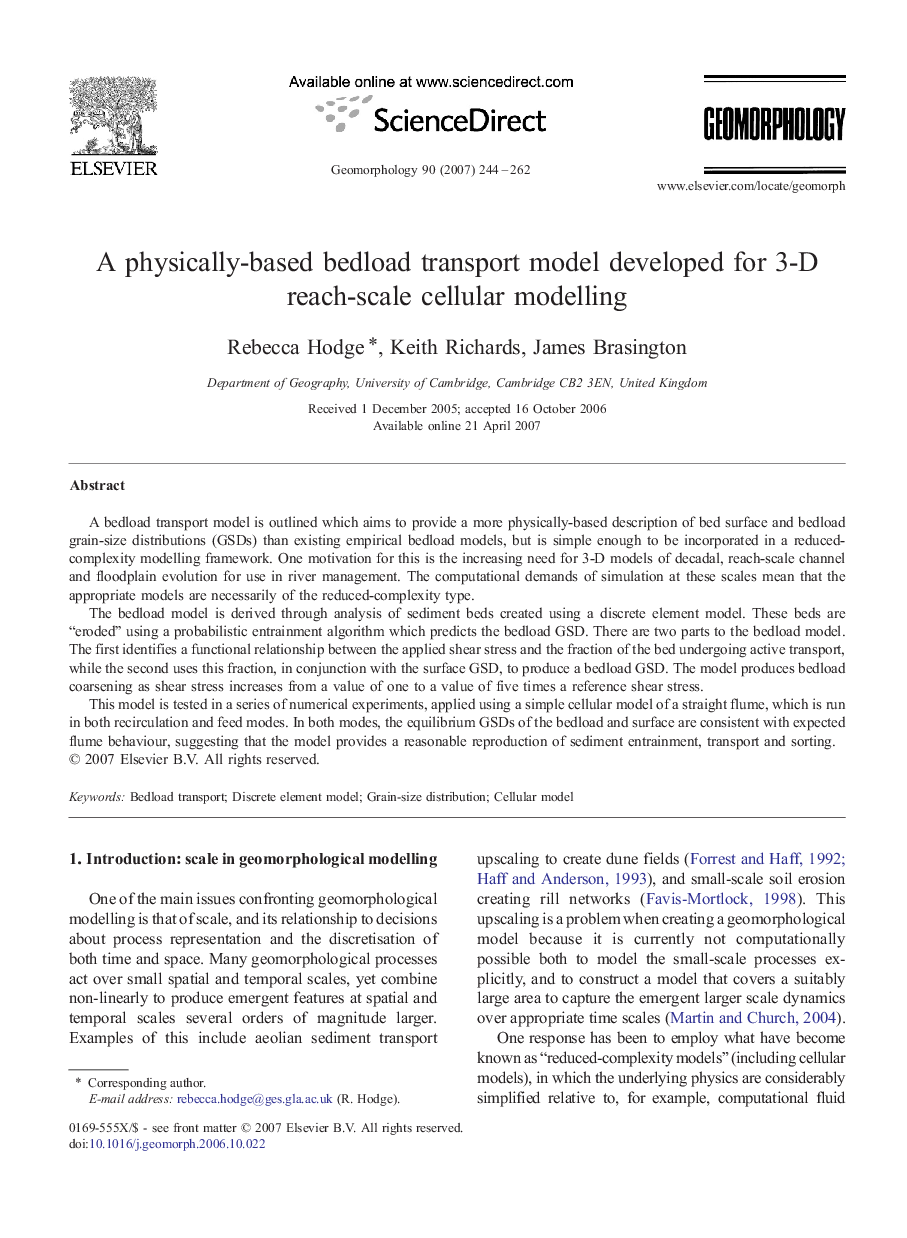| Article ID | Journal | Published Year | Pages | File Type |
|---|---|---|---|---|
| 4687037 | Geomorphology | 2007 | 19 Pages |
A bedload transport model is outlined which aims to provide a more physically-based description of bed surface and bedload grain-size distributions (GSDs) than existing empirical bedload models, but is simple enough to be incorporated in a reduced-complexity modelling framework. One motivation for this is the increasing need for 3-D models of decadal, reach-scale channel and floodplain evolution for use in river management. The computational demands of simulation at these scales mean that the appropriate models are necessarily of the reduced-complexity type.The bedload model is derived through analysis of sediment beds created using a discrete element model. These beds are “eroded” using a probabilistic entrainment algorithm which predicts the bedload GSD. There are two parts to the bedload model. The first identifies a functional relationship between the applied shear stress and the fraction of the bed undergoing active transport, while the second uses this fraction, in conjunction with the surface GSD, to produce a bedload GSD. The model produces bedload coarsening as shear stress increases from a value of one to a value of five times a reference shear stress.This model is tested in a series of numerical experiments, applied using a simple cellular model of a straight flume, which is run in both recirculation and feed modes. In both modes, the equilibrium GSDs of the bedload and surface are consistent with expected flume behaviour, suggesting that the model provides a reasonable reproduction of sediment entrainment, transport and sorting.
